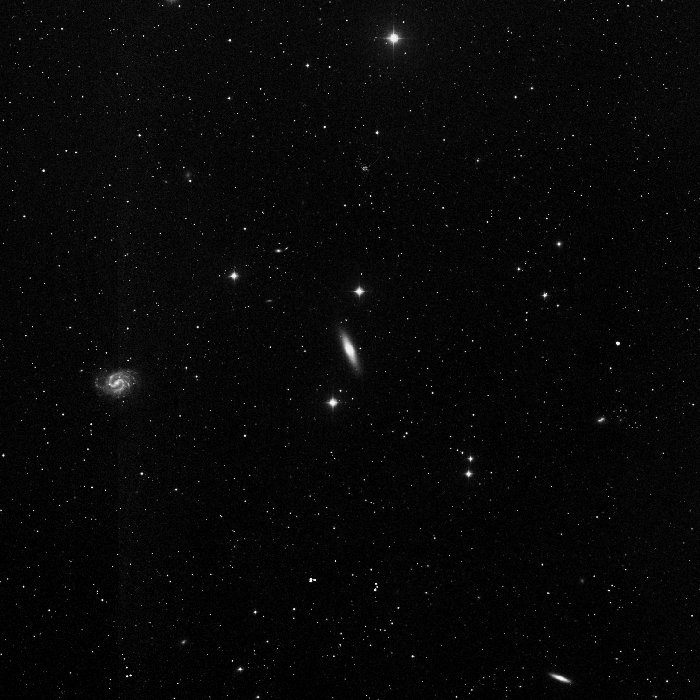
 Copyright © Michael Richmond.
This work is licensed under a Creative Commons License.
Copyright © Michael Richmond.
This work is licensed under a Creative Commons License.
In the midst of the Virgo cluster lies the S0 galaxy NGC 4526:

In April, 1994, the Leuschner Observatory Supernova Search team noticed something new near the center of this galaxy: a supernova!
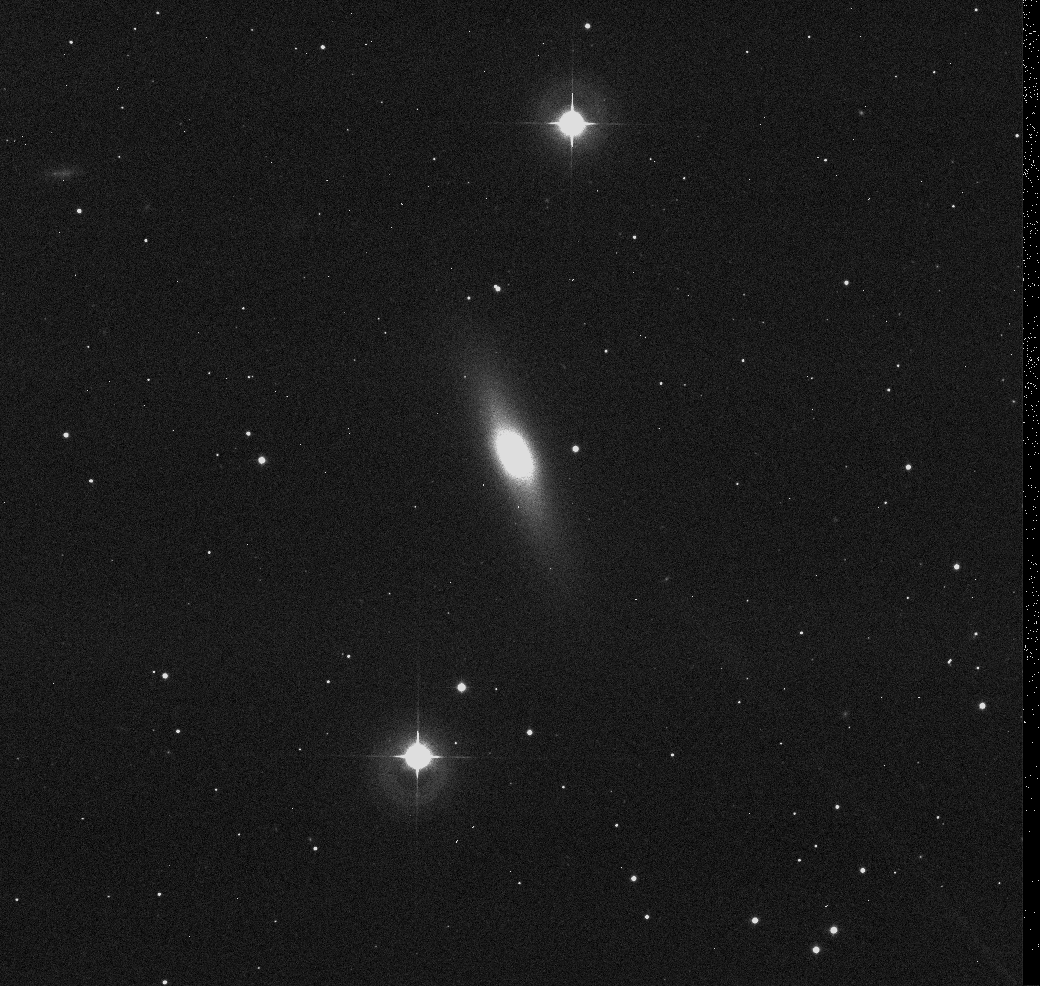
Can't see it? Well, that's no surprise, because this explosion occurred close to the bright bulge of the galaxy:
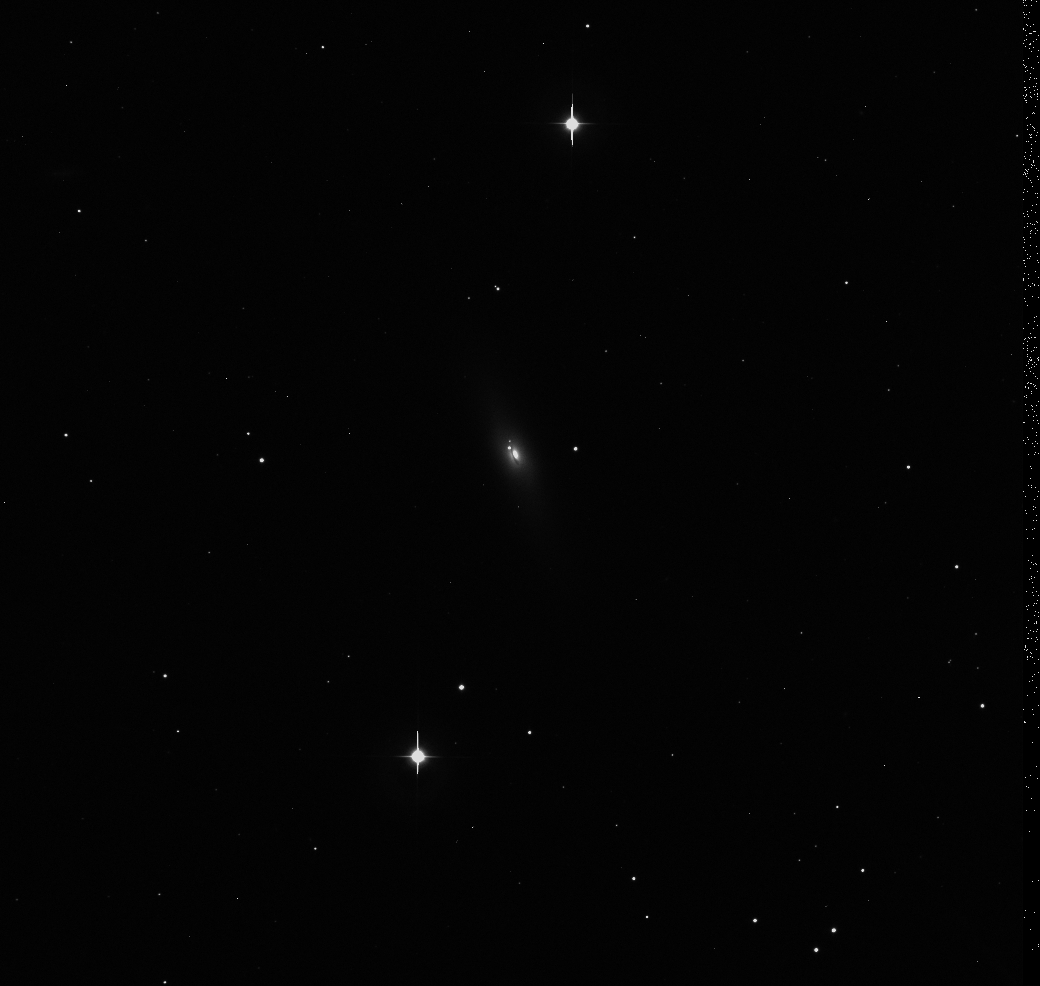
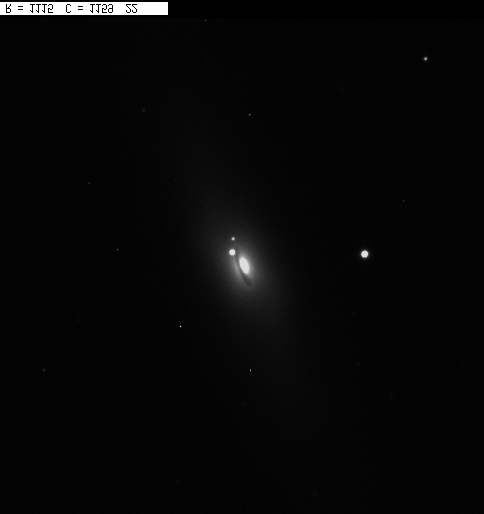
The supernova is surrounded by light from the galaxy's disk, very close to the edge of a dust lane (as this image from HST shows):
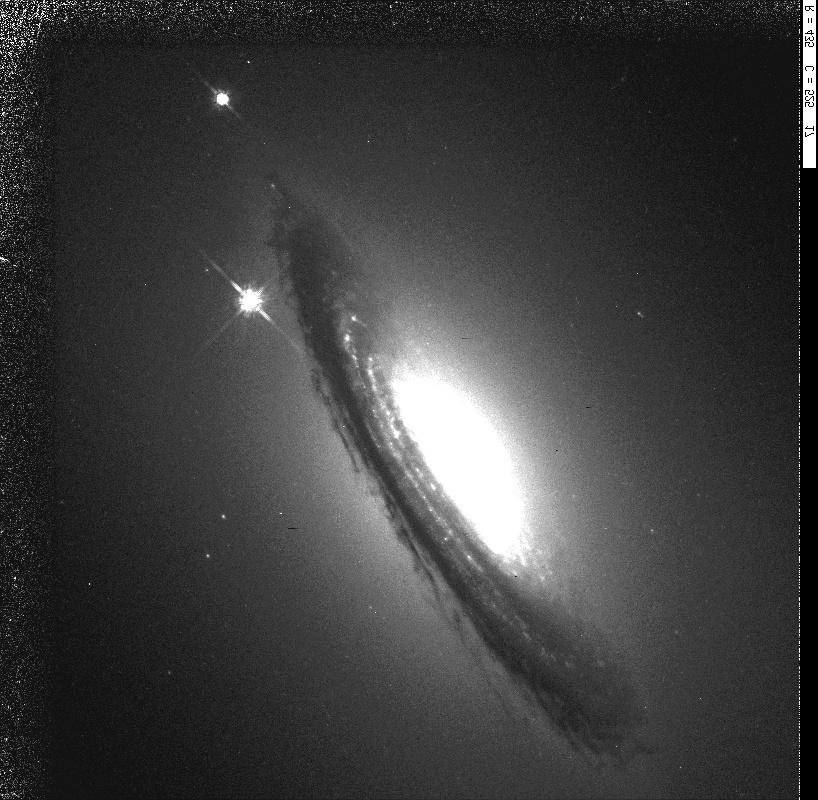
So, how can one measure the brightness of the supernova accurately? Any aperture will include backgroun light from the galaxy. Moreover, because the supernova is close to the bulge, the background level around it changes from one side to the other. We didn't have the luxury of great seeing (as in the HST image), which made the job even harder. Here's an example of one of our typical images. First, a soft stretch:
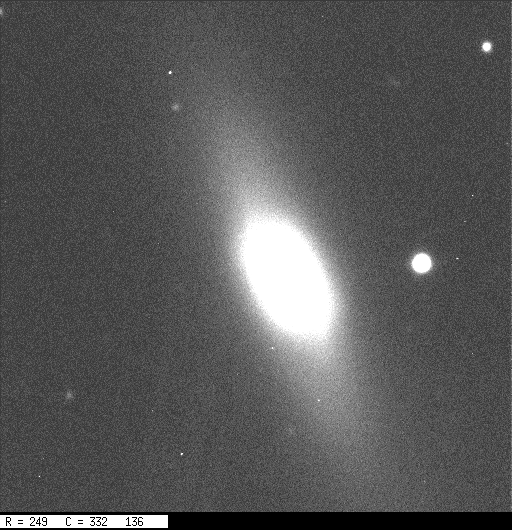
And here's the same image at a harder stretch:
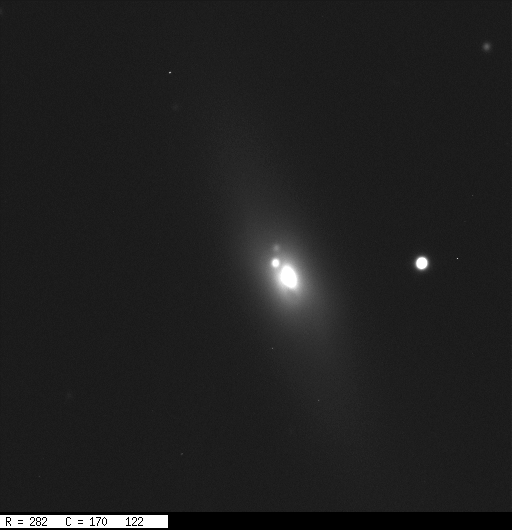
We tried three methods:
Here's the result of a decent template subtraction:
Before:
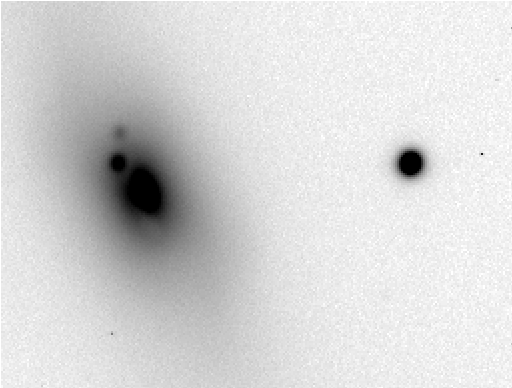
After:
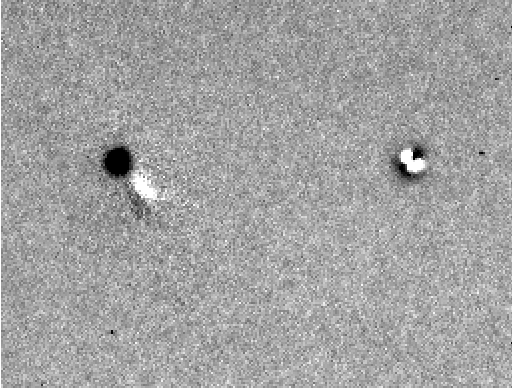
Note the differences between measurements made in these different ways:
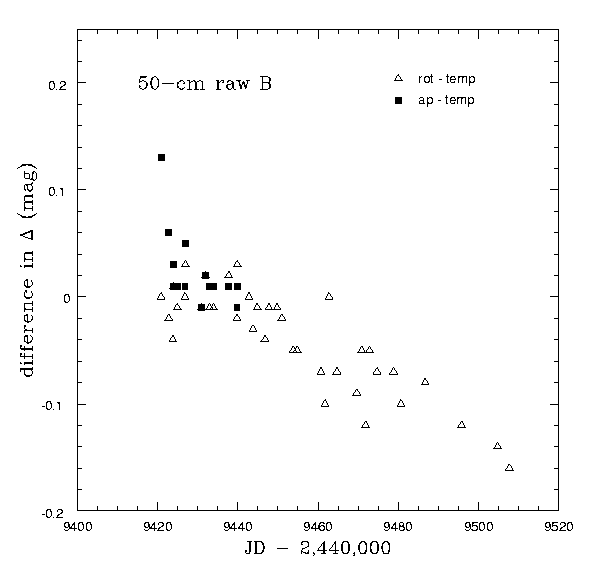
 Copyright © Michael Richmond.
This work is licensed under a Creative Commons License.
Copyright © Michael Richmond.
This work is licensed under a Creative Commons License.